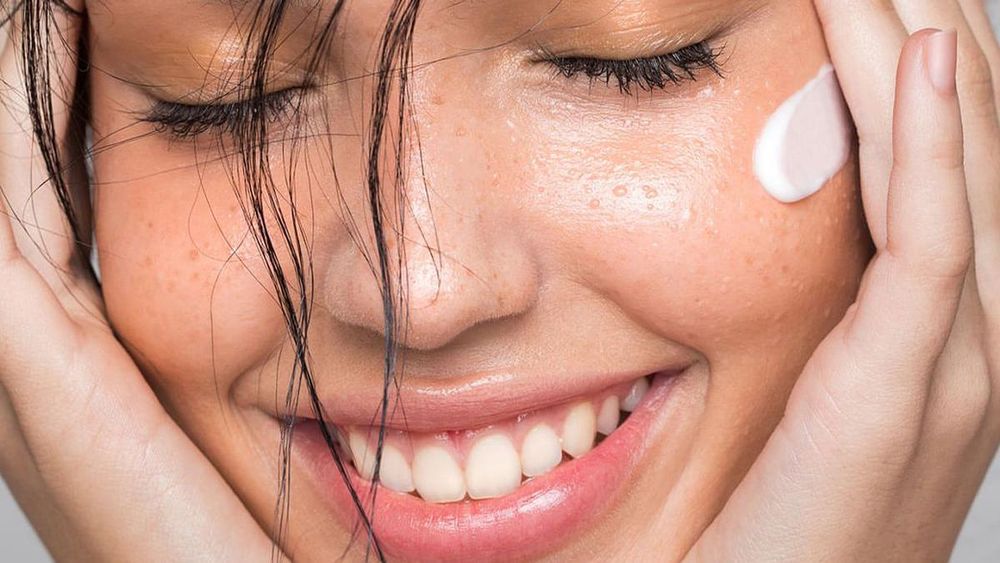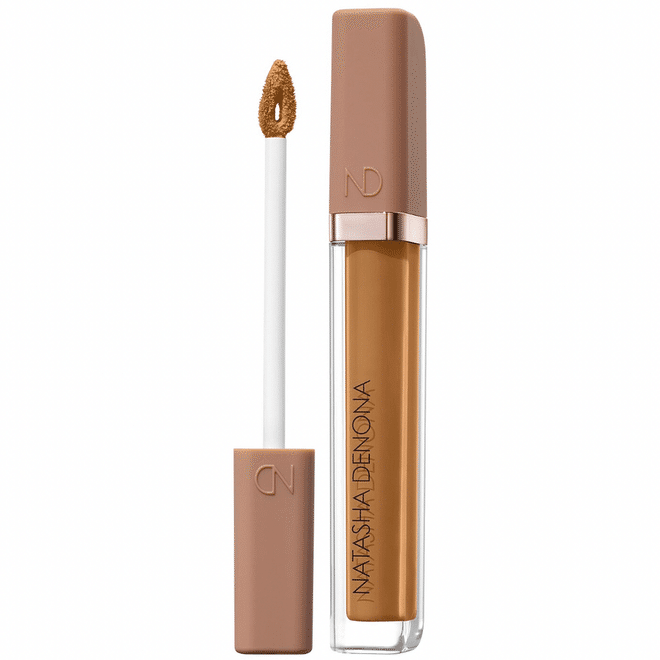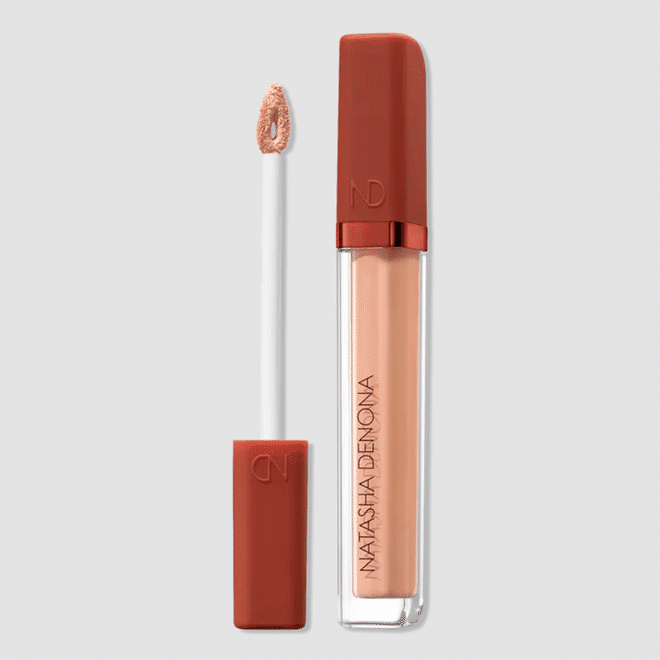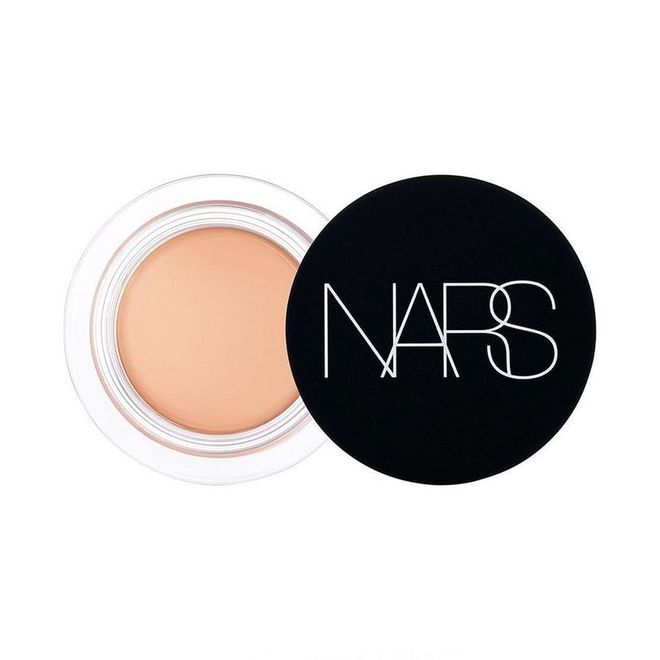How To Get Rid Of Dark Under-Eye Circles, According To Experts
Solutions for tired eyes, thanks to the pros.

We don't quite remember the first time we had dark circles. And yet, one day, they took up residence underneath our eyes—uninvited, mind you—and just never left. Although there are several causes of dark circles (we'll get to those below), there are also several ways we can address them, from eye cream to filler, and even just really good concealer when all else fails. Ahead, find out more, courtesy of N.Y.C.-based dermatologist Carmen Castilla, and Birmingham, Alabama-based dermatologist Corey L. Hartman.
What Causes Dark Circles?
"Dark circles can be caused by numerous factors, the most common being aging, your genetics and your lifestyle," explains Hartman. But let's dive into the specifics:
- Pigmentation: "The cause of pigmentation can be variable: It can be genetic—which is more common in certain ethnicities, or rashes such as eczema—which in certain skin tones appears as dark circles," says Castilla. In addition, she says, chronic rubbing "either from allergies, rashes or habit" can exacerbate pigmentation.
- Aging: "As we age, there is a shift, or shrinking, of the fat pad that sits underneath the eye and resorption of the orbital bone," says Castilla. "This process leads to a hollowing and shadow underneath the eye that appears as a dark circle." Beyond that, she says, "As we age, our skin also thins, which makes blood vessels more visible underneath the eye."
- Vascular congestion: "Allergies or a cold can also lead to exacerbated dark under eye circles," says Hartman. Congestion creates pressure all over—including under your eyes. "This congestion puts pressure on blood vessels making it difficult for blood to drain away from the face to the heart, so it pools underneath the eyes," explains Castilla.
- Lack of sleep: This one may seem obvious, but it's true. "If you are not getting enough sleep, or work long hours, you may find that those factors lead to dark circles," says Hartman.
- Underlying medical issue: "Our skin is a reflection of our overall health," says Castilla. "Hypothyroidism and certain nutritional deficiencies can exacerbate under-eye circles. It is important to have a physical exam with your internal medicine doctor."
- Genetics: Parents had prominent dark circles? If that's the case, you're more likely to as well, says Hartman.
Related article: The 17 Best Eye Creams To Get Rid Of Dark Circles
How Can You Get Rid of Dark Circles?
"The best treatment depends on the underlying cause of the dark circle," says Castilla, adding that "There is no single standalone approach given the multitude of potential causes." But first and foremost is often the hardest: "One of the best ways is to try to get at least seven hours of sleep each night, and stay hydrated. Dehydrated skin is more likely to show dark circles versus hydrated skin," says Hartman. For dark circles due to allergies, an OTC medication may help. "'Allergic Shiners' often respond well to antihistamines or nasal sprays that reduce nasal and sinus congestion," adds Castilla.
Regardless of the key cause, if you smoke cigarettes or drink alcohol, that's probably not helping. "Stopping smoking is critical for all types of dark circles as well. Smoking contains numerous toxins that damage collagen which leads to premature skin aging," says Castilla, who also advises to "Minimize the alcohol intake. Alcohol leads to dehydration which can worsen the appearance of dark circles."
You can—and should—also add an eye cream into your skincare routine to help keep dark circles at bay. "I like Orvos Satin Eye Gel Cream. One of its active ingredients is bakuchiol, a plant-based retinol alternative that target dullness, uneven skin texture, and fine lines," says Hartman. "It’s ideal for patients who cannot tolerate retinol. The formula also uses tea extract that calms irritation and soothes redness and caffeine helps naturally de-puff the skin."
There are also several in-office treatments to consider, especially for chronic dark circles. "Hollowing or loss of volume due to the aging process typically responds best to a hyaluronic acid filler," says Castilla. And although some pigmentation may be treated with a prescription medication, "genetic pigmentation typically responds well to in-office chemical peels or gentle lasers such as the Clear and Brilliant laser," she adds. Another option for hyperpigmentation is the Picosure laser, which can "help to break up pigment that causes hyperpigmentation of the skin in the area," according to Hartman.

Orvos Satin Eye Gel Cream
How Can You Prevent Dark Circles?
Again, sleep and hydration are fundamental. "Drink eight glass of water a day. Try to get at least seven hours of sleep each night," says Hartman. And as always, wearing sunscreen is a must to prevent further pigmentation.
The derms are both quick to remind that our skin can be a signifier of our internal health. "Our overall skin health is also a reflection of our diet, so it is important to eat a healthy diet with plenty of fruits and vegetables," says Castilla. Adds Hartman: "Eating a diet well-balanced in vitamins can also help with the skin’s overall appearance—not just around the eyes." Castilla also recommends breaks from screen time. "Staring at a computer all day can cause eye strain which many people alleviate by rubbing their eyes. Taking a break from your screen can help break this habit."
Can DIY Treatments Help With Dark Circles?
Sure—well, maybe. "DIY treatments might give you an immediate reduction, but it won’t last long," says Hartman, who adds that "You’re better off speaking with your board-certified dermatologist on a recommendation for an in-office professional treatment that will help reduce dark circles." Still, there are a few short-term things you can try.
Cold compresses: "You can apply a cold compress to your under eyes, which will help dilate blood vessels and lessen the appearance of puffiness," says Hartman.
Elevating your head: This one goes back to gravity: "Elevating your head on two pillows while sleeping helps blood drain back to the heart preventing it from pooling underneath the eye," recommends Castilla.
Soaking with caffeinated tea: Both derms said tea masks can help. "Black tea contains caffeine which can also help constrict blood vessels and improve the appearance of under eye circles," says Castilla, taking care to add that "It needs to be steeped, but ensure it is not hot to prevent burning your skin."
How Do You Cover Up Dark Circles?
If you need to get rid of dark circles ASAP, the best option is makeup. Here's what makeup artist Tonya Riner recommends.
HYDRATE, THEN CONCEAL
After starting with an eye cream, Riner moves onto concealer. "I use my ring finger to pat concealer only where I see darkness which is usually in the inner corner of the eye and below," says Riner. "The warmth of my finger combined with the pressing motion gives sheer coverage and keeps the concealer right where I want it. If I need more, I go over the area again."
If you have more severe dark circles, you can also use a color corrector first. "The corrector cancels out the tone of the discoloration and then makes it possible to get true brightening from your concealer," says Riner.
CHOOSING YOUR FINISH
When choosing the right color concealer, Riner reminds that "Concealer should be one to two shades lighter than your skin tone." In addition, she says it's important to match the finish with the rest of your makeup: "I choose one with a radiant finish for a dewy complexion and a soft matte one for a more polished look."
LESS IS MORE
According to Riner, "The best hack is to use less! Creasing and settling is caused mainly by excess product." She also recommends waiting a bit after applying concealer to set with powder, as "This allows the product to warm with your body temperature and you’ll see where you have too much. Then, I press on the creases with my finger to remove the excess without disturbing the concealer."
She also reminds that sometimes too much makeup can be too obvious. "There’s always a give and take with concealer and I’d rather have a bit of darkness than noticeable makeup that accentuates fine lines. What looks good on social media with lighting and filters is very different from what looks good in real life."
PRO MAKEUP PICKS TO COVER UP DARK CIRCLES

Natasha Denona Hy-Glam Brightening & Hydrating Serum Concealer"Natasha Denona has a really impressive collection of concealers and color correctors for every skin tone," says Riner.

NATASHA DENONA Hy-Glam Correcting Concealer
Denona's color-correcting concealer comes in six shades, to counteract dark circles on all skin tones.

NARS Soft Matte Complete Concealer
"I love NARS Soft Matte Complete Concealer when I need full coverage and more matte finish overall," says the pro.
Meet the Experts:
Carmen Castilla, MD, is N.Y.C.-based, board-certified dermatologist and clinical instructor at Mount Sinai.
Corey L. Hartman, MD, is a board certified dermatologist and founder of Skin Wellness Dermatology in Birmingham, Alabama.
Tonya Riner is a celebrity makeup artist based in Houston, Texas.
Why Trust Harper's BAZAAR?
For more than 150 years, Harper’s BAZAAR has been the preeminent fashion and beauty resource for women at every age. We cover what’s new and what’s next in beauty by working with the world’s leading authorities in dermatology, plastic surgery, cosmetics, skincare, haircare, and fragrance. Every story we publish has been thoroughly researched and vetted by our team of beauty editors and industry experts.
This article originally appeared in Harper's BAZAAR US.